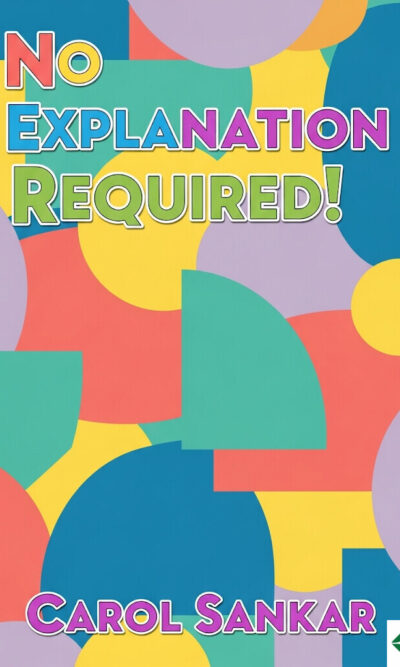Description
Conflict is a part of every workplace. People bring different personalities, goals, and expectations, and sooner or later, those differences clash. Many employees and leaders think they are good at handling disagreements, but in reality, most are not as skilled as they believe. When conflict is ignored or mishandled, it spreads like a ripple, creating distrust, lowering creativity, and pushing talented people away. In fact, research shows that workplace disputes cost billions of dollars in lost productivity every year. Learning how to handle disagreements well is not just a nice leadership skill – it is essential for building a healthy, successful organization.
The first step is changing the way we see conflict. Too often, people view it as a battle between “me and them,” right versus wrong. That mindset leads to defensiveness and makes resolution much harder. A better way is to think of conflict as misalignment. Two people may want different things, or they may interpret situations differently, and those drives haven’t yet found balance. When seen this way, conflict becomes less about winning or losing and more about finding harmony.
Unfortunately, most people fall into three common traps when conflict appears: avoiding it, appeasing others, or reacting with aggression. Avoidance can feel safe, but it only delays the inevitable. Leaders might tell themselves, “We’re all adults, I shouldn’t have to say anything,” or “This isn’t the right time.” But by not addressing issues, small problems grow larger. Appeasement seems polite but creates another problem. Saying “yes” to everything to avoid confrontation leads to broken promises and lost trust. Aggression, whether through sarcasm, passive-aggressive behavior, or outright anger, only shuts down honest conversation. Aggressive people may believe they are being “direct,” but they are really avoiding true dialogue by pushing others away. All three responses—avoidance, appeasement, and aggression—fail to create real solutions.
The alternative is to build conflict capacity. This means developing the inner strength and outer skills to face problems directly and constructively. It begins with self-awareness. Before the mind recognizes frustration, the body often gives signals: tense shoulders, a racing heartbeat, or shallow breathing. By noticing these physical cues, people can pause before reacting. Over time, patterns become clearer, and what once felt automatic can be slowed down, allowing room for better choices.
Once self-awareness grows, practical skills come next. Strong conflict managers don’t just argue or push back. They know how to shift heated arguments into conversations about interests. They ask questions to uncover the real reasons behind resistance. They can correct bad behavior without destroying relationships. These skills cannot be learned in a single training session. They develop through practice, honest feedback, and guidance from mentors. The goal is to be able to use these skills naturally, even in stressful moments.
But even with inner strength and practical skills, there is one more factor: culture. If a company rewards avoidance or excuses bad behavior because someone brings in good results, no amount of individual skill will fully solve the problem. A healthy culture supports open conversations and holds everyone accountable, no matter their position. When self-awareness, practical skills, and supportive culture work together, conflict can become a tool for innovation instead of a source of damage.
Leadership plays a huge role in this. Leaders must find clarity about what they want, what their values are, and how those values guide decisions. Conflict often signals a gap between stated values and real actions. For example, an organization may say it values respect, but if senior staff bully new employees without consequences, the culture says otherwise. Leaders who feel strong emotions—anger, frustration, or discomfort—should see them as signals of misalignment. By asking themselves questions like, “What do I want from this situation?” and “How does this connect to our values?” leaders can move from confusion to clarity.
Clarity is not about always having the answer. It is about knowing where you stand, what matters, and what outcome you seek. When leaders approach conflict with this kind of focus, conversations become more productive. Instead of trying to “win” against difficult personalities, they work toward constructive outcomes that benefit the whole team.
Of course, clarity must be followed by effective conversations. Many leaders rehearse difficult talks in their heads, only to fail when the real moment comes. Using vague statements like “you’re always late” usually backfires. A better method is to be specific: “You arrived late to three meetings this week.” Specific facts reduce defensiveness and shift the discussion to solutions. Connecting behavior to business results is also powerful. Saying “wearing casual clothes hurts customer trust and sales” is much stronger than “I don’t like jeans at work.” The key is balancing preparation with flexibility—knowing what to say, but staying open to where the conversation leads.
Listening is just as important as speaking. Too often, managers listen only to reply. The best leaders listen to discover. Many performance issues are not about laziness or resistance but about missing skills, unclear expectations, or fear of failure. By staying curious and asking questions like “What makes this difficult for you?” managers can uncover deeper barriers. Sometimes objections like “it’s too hard” hide fears of looking incompetent or losing status. True listening uncovers these hidden layers.
After listening, accountability must follow. That means setting clear goals, measurable steps, and regular check-ins. But accountability should feel collaborative, not controlling. The best managers build plans together with their team members, turning problems into shared challenges. One way to think of this is creating a ladder together—each step a small but clear move toward improvement.
In the end, conflict is not something to fear. It is an unavoidable part of working with people. The difference between a toxic workplace and a thriving one is how conflict is handled. By avoiding the traps of avoidance, appeasement, and aggression, and instead developing self-awareness, practical skills, and supportive culture, leaders and employees alike can turn disputes into opportunities. Clear communication, deep listening, and accountability transform frustration into growth.
The main lesson is simple: conflict does not have to be destructive. With courage, clarity, and the right approach, it can strengthen trust, inspire innovation, and bring teams closer together. Organizations that embrace conflict as a chance to grow will not only keep their best people but also build the resilience needed to thrive in an ever-changing world.





